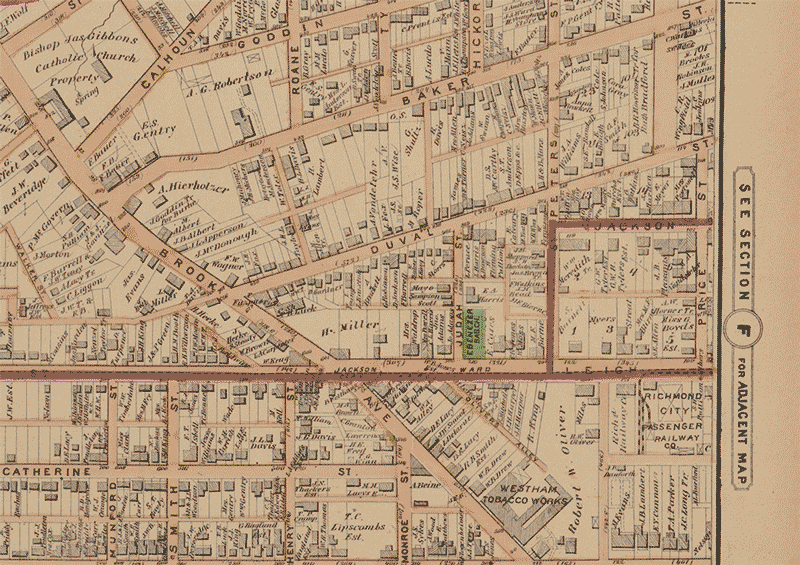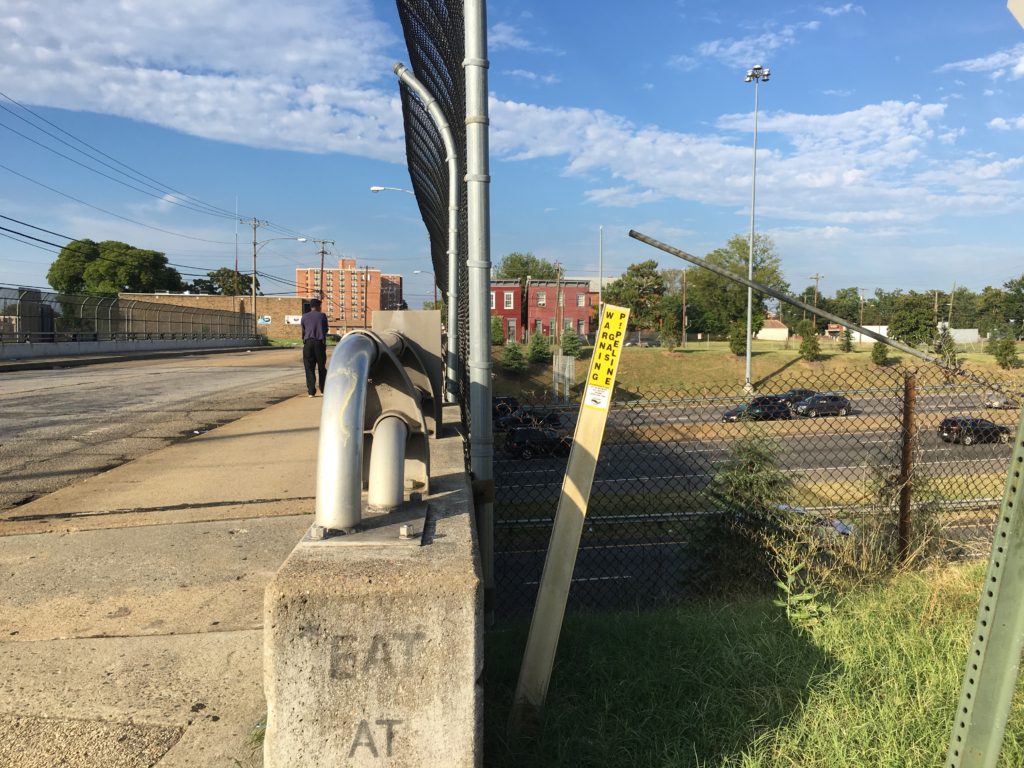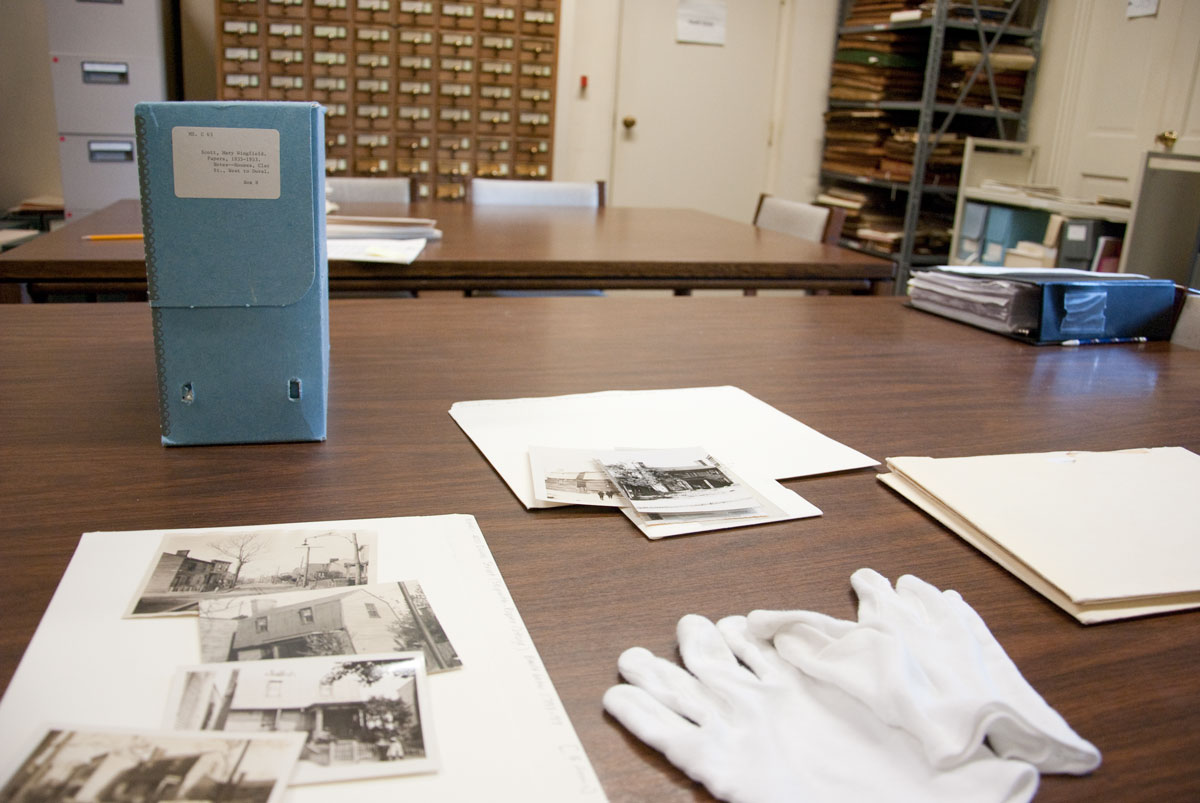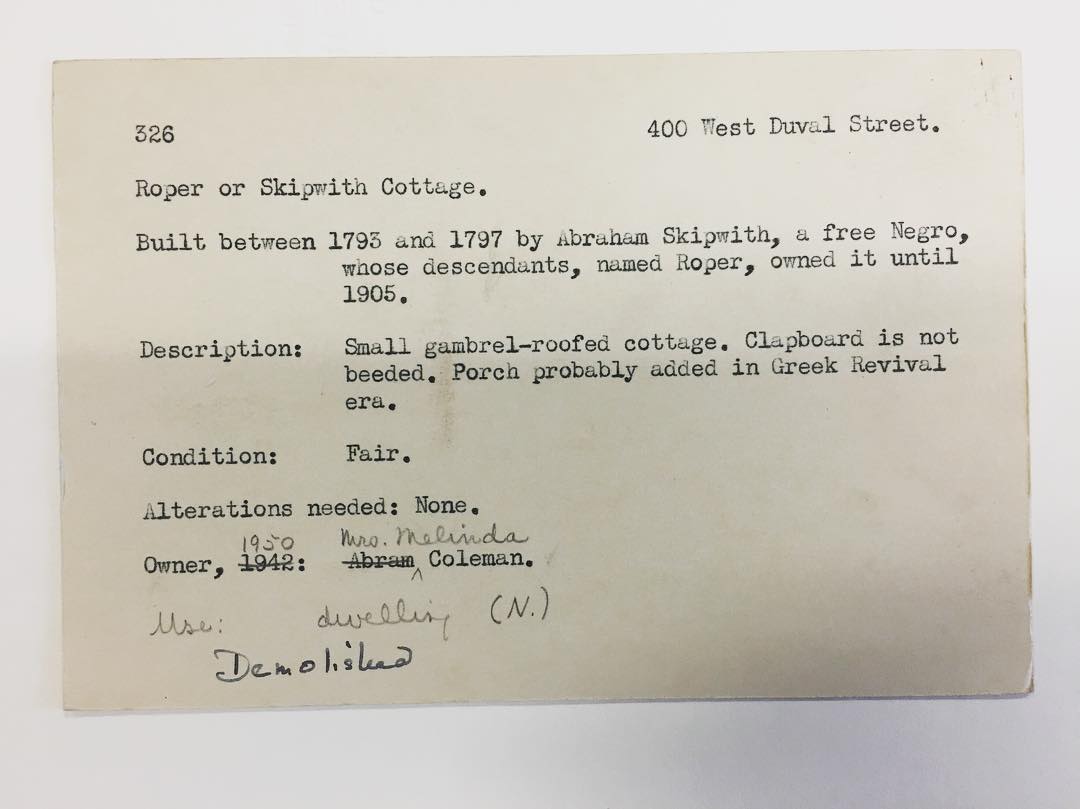
In the 1950s, the United States launched one of its largest comprehensive infrastructure projects ever, the construction of the national interstate highway system. The primary goals of this web of limited access roads was to facilitate faster automobile trips between cities and states and to ease congestion for commuters traveling daily to central business districts from the growing suburban and exurban communities. While it succeeded in moving people to and through America’s cities, it had disastrous effects on the country’s urban cores.

An interest in the disruption caused by the construction of the interstate highway system led me to a deeper visual investigation of the Jackson Ward community in Richmond. This neighborhood, known at one point as the “Harlem of the South,” was the center of African American culture in the region. The community was literally split in half by the construction of the Richmond-Petersburg turnpike (I-95) in the 1950s. A block-wide swath was cut into the cityscape, leaving scars of destruction that still remain unhealed. Hundreds of historic homes and neighborhood structures were cleared for the sake of America’s burgeoning car culture.

My first field research included a trip to the area around 1st Street and Duval Street. This area directly abuts the south side of the highway. In these images, you can see the stark interruption of old neighborhood density disrupted by interstate highway. Blocks of old rowhouses are pocked by abandoned buildings and vacant lots. Looking across the overpass, you can see the public housing complex built originally to house poor families who lost their homes during demolition and construction of the highway, part of a decades-long national effort tinged with issues of race and inequality—slum clearance and urban renewal.
The next step in my investigation was to overlay maps from before the highway construction with contemporary maps, to observe the changes to the streetscape and infrastructure over time, block by block. As expected, the changes to the street grid alone were tremendous, with many streets and alleys completely disappearing. A cloverleaf of entrance and exit ramps, emblematic of our postwar automobile culture, disrupted several blocks all by itself. These pieces of information had nuance and intrigue, but I needed to dig further to find a specific narrative to focus on as a designer.
Along with examining maps collected from the Library of Congress online archives, I found two books that helped me get a sense of some particular issues in Jackson Ward. The Jackson Ward Historic District (1978), by Robert P. Winthrop and Houses of Old Richmond (1941), by Mary Wingfield Scott both held accounts of a cottage that once stood at 400 West Duval Street on the western edge of Jackson Ward. The house was built by Abraham Skipwith in 1793–1797. I was shocked to read that Skipwith was a freed slave, living in the antebellum South; somehow I was unaware that there was a community of emancipated African Americans living below the Mason-Dixon line decades before the start of the Civil War and the Emancipation Proclamation. The house would remain in the family for generations, later becoming known as the Skipwith-Roper cottage after Abraham Skipwith’s granddaughter married Peter Roper. These layers of history formed data points to be used in mapping a narrative.

Winthrop acknowledged that the Skipwith-Roper cottage became the “nucleus” of the community, which would become “the incubator of black capitalism in the United States.” All of this history was wiped away in the name of progress. The Skipwith-Roper cottage, along with hundreds of other homes, were cleared to make way for the highway. I wanted to respond to this demolished, buried history. The Skipwith-Roper cottage became a stand-in for the vanished history in Jackson Ward, an indicator species to use scientific terms. I wanted to respond by creating a piece of design that acknowledged these forgotten pieces of history and fragmentation in the community by giving these stories visual form again.
As a designer it was important to continue the process of making and giving form to ideas as I discovered new information. I constructed map overlays and began experimenting with ideas of transparency and layering of information. The grainy image of the Skipwith-Roper Cottage from Wingfield-Scott’s book became a symbol to which I kept returning. I built a small model of the cottage and began experimenting with using it as a container to hold information. The structure would serve as set of archival drawers or sleeves to house content. The idea also evokes the form of a reliquary.

One issue kept nagging me during the research phase of the project. Online research yielded scant information about the cottage, especially information related to its displacement by the highway. Robert Winthrop mentioned that the house was moved to Goochland County when the north side of Duval Street was slated for demolition to make room for the highway. I reached out to Winthrop and an archivist at the Goochland Historical Society. It still remained a mystery—there was no trace of the house in Goochland. I looked for records of the house in Selden Richardson’s Built By Blacks: African American Architecture & Neighborhoods in Richmond, VA. No mention at all of the cottage there.
I discussed this particular issue and others related to Jackson Ward with Ryan Rinn, who runs the Storefront for Community Design and teaches in the VCU urban planning department. This fruitful conversation led to an appointment at the Valentine history center archives. This was turning into an in-depth project in historical research. My white-glove covered hands flipped through countless primary documents—notes from Mary Wingfield Scott, photographs, and other bits and pieces of information. I found one index card with a typewritten account of ownership of the cottage throughout the decades. Could this reveal the missing piece of information about the fate of the house? There it was, scribbled in handwriting at the bottom of the card—”Demolished.” My heart sunk to see it written so plainly and nonchalantly. It almost felt callous.

*More to come
Come see Skipwith Cottage in Goochland County, standing proudly since 1958 when it was saved from demolition.
-Scott
Ten weeks prior I booked the car out of GoldCar in Rome. Your vehicle was already damaged before my pick-up. Still, I was convinced that the auto was registered into their system. And then, around 14 days ago their consultant reminded me about the damaging, I didn’t do. He was planning to send me an invoice for repairing the auto. I was in a shock. What’s true, they fully understood that it was their own mistake. Certainly, my mobile was calling over and over They made an effort to get in touch with me to say their unnecessary “sorry”. Soon after, everything was rectified. Unfortunately, my opinion about their rental car company was spoiled. You can use GoldCar at Fiumicino Airport. The most essential thing is to be aware of everything!
I liked the guide and suppose you’ve got more such material?
If yes, so please note it because it is somewhat uncommon for me at the present moment, and not for me, that is my view.
It appears that it is reasonable, I had been considering that for a while, and
you know, I made exactly the very same conclusions. I recall those times of
the last year at uni, that was a whole mess, every day and without the conclusion.
The one thing I chose to do was to purchase some of my academic assignments at essay service.
Well, imagine what a relief this had been. I struggled for a couple of weeks along with my documents, and this service https://essayhub.com only
saved me!!! I graduated with good scores, and now I am so grateful for the support
they give me back afterward.
Cool Astro is a great resource for anyone who is interested in learning more about astrology, numerology, and other related topics. The website features articles, blog posts, and videos that are written in a clear and easy-to-understand way. Cool Astro also offers a variety of free tools and resources, such as horoscopes, birth charts, and numerology calculators.
https://www.coolastro.com/